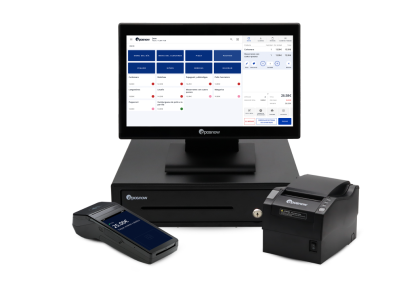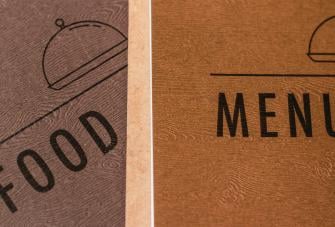Restaurant Competitor Analysis: Template and Examples
The law of supply and demand dictates everything we do and, in the ultra-competitive restaurant industry, this phenomenon is even more relevant.
No matter how great your food is or how hospitable you are, your business must beat the competition. Otherwise, you will find yourself struggling to stay afloat.
So, how do you become better than your rival restaurant? How can you be sure to come up with more creative ideas? It starts with conducting a competitive analysis.
What is competitive analysis?
Used across many industries, competitive analysis is the process of studying your competition’s strengths and weaknesses to understand your competitor's offerings and see how you can outperform them in the marketplace. You will analyze a variety of factors that influence trade to get a complete understanding of what makes them successful.
Typically, you will perform a market and competitor analysis while writing your business plan. By doing so, you will determine where there is room in the market for your restaurant and how you can maximize your chances of success. If the analysis shows that the market is saturated with similar products and competition is fierce, it could prevent you from investing in a doomed business.
Most importantly, including this section in your business plan will show investors and lenders that you have thought through all possibilities. They will be more willing to find you funding when you show the high level of marketplace acumen expected of business owners.
Typically, your competitor analysis will touch upon these topics:
- Size
- Market share
- Menu items
- Growth
- Cash and assets
- Reputation
- Marketing methods
- Target audience
Find the perfect POS to help you run your restaurant business! Choose from a wide selection of hardware and software options for technology that will help drive you to the top!
- Choose from a variety of printer and card payment options. Or even purchase a Kitchen Display Screen and create a direct link between front and back of house
- Find the POS hardware that suits you with mobile options for roaming staff to make extra sales and spend more time engaging and caring for your customers
- Create a bespoke software setup to suit your business with our flexible sales technology with hundreds of optional apps and features to give you everything you need, and cut away everything you don't for a streamlined service

Basics of a restaurant competitor analysis
Let’s take a step-by-step walkthrough of the competitive analysis process.
Identify your competition
Look around your area and write down every business that could compete with yours. You want to include indirect competition as well since these businesses could eat into your market share. For example, a fast-food restaurant could be an indirect competitor for a full-service Italian restaurant; even though this competitor's customer base seems different, they still sell pre-cooked food.
Your local market will determine how wide to cast your net. In a rural area, a 10-mile search radius may be a good idea since people are used to driving long distances for things. In a city, you might want a 4-block radius since people do not want to walk too far for food.
Analyze their business model
Once you have your list of competitors, take a detailed look at each restaurant’s business structure and overall success. You’ll want to note every aspect of their business that could influence their bottom line. By doing so, you can see what they do right, any shortcomings they have, and how they can improve.
Once you have this information, you can learn ways to replicate a competitor’s success and see what you need to offer to gain a competitive edge.
Some common aspects to study include:
- Type of restaurant: What are their products or services? Fast food, quick service, casual, full-service, etc.
- Additional services: Online ordering, delivery, pickup.
- Ordering apps: List all applications they are available on and if they increase their prices on these platforms.
- Theme and menu: Does the restaurant have a tailored menu or offer a variety of items? Does the restaurant have a theme, such as Mexican or Mediterranean?
- Years in operation: Success for a startup, growing small business will look different, and may be indicative of a larger threat in the future
- Dining room space
Of course, the most important step is completing a SWOT analysis. This method will help you get a complete picture of the restaurant’s competitiveness in the market.
SWOT stands for:
- Strengths: Where do they excel? Why do customers love this restaurant?
- Weaknesses: Where do they fall short? What disappoints customers or what services do they lack?
- Opportunities: How can your restaurant capitalize on these weaknesses?
- Threats: Do they offer anything you cannot? For example, does the restaurant have the perfect location or do they have unique flavours/gimmicks that you can’t replicate?

Study their menu
Menus can make or break a restaurant. From offering the wrong items to having poor pricing, there are a handful of concerns to address before you plan your menu. By looking at competitor restaurants, you can see how they approach their menu.
Some core parts to look at include:
- Size and scope: Is the menu small or large? Does it stick to a certain theme or offer something for everyone?
- Pricing: What are the lowest and most expensive items in each category? Are prices similar to other restaurants?
- Portion size: Will the average meal satisfy most guests? Does the price match the portion?
- Fan favourites: What items sell the most? Are there any items unique to their restaurant?
- Local partners: Does the restaurant feature any local farms, breweries, or other area businesses?
- Dietary items: Can people with allergies find something to eat? Are there options for vegetarians, vegans, and others?
Review sales techniques
Visit the restaurant and observe the front of house staff. Study what sales techniques servers use, such as upselling and cross-selling. Likewise, see what types of specials the restaurant offers and how hard the servers suggest these items. If there is a bar, ask for a drink and see if the bartender suggests using name-brand bottles instead of well liquor.
If the restaurant staff use these tactics successfully, be sure to make note of it. If it works for them, it may very well work for you.
If they are not upselling, also make a note. This missed opportunity can help you increase your restaurant’s revenue.
Evaluate their marketing strategy
Since you will be competing for market share against this restaurant or pub, you’ll want to see what tactics they employ. Your marketing plan will need to be superior in some ways if you want to grow brand awareness and reach their audience.
Be sure to look at:
- Channels: Where do your competitors advertise? Do they have billboards, direct mail, and social media ads? If you use a search engine, how often do these competitors appear?
- Presence: Does their marketing appear strong? Can you not go a day or two without seeing their name? How strong is their customer review score? Do they use Google or other review sites?
- Audience: What demographic does the restaurant target? How do they speak to each audience?
- Offers: Does the restaurant advertise any discounts for first-time customers? Do they regularly promote certain items in their press releases? Do these appear on social media?
- Newsletter: Can you sign up for a monthly newsletter or receive periodic discounts?
- Delivery apps: Do they run promotions on Uber Eats and other apps?
Identify customer service gaps
You can use competitor reviews to see what guests really think. It’s no surprise that all restaurants get bad reviews from time to time, but you want to look for a few key things when browsing review sites.
- Do the poor reviews mention the same issue? If so, it shows the restaurant has failed to address a common issue.
- Do guests complain about cost? If so, you can determine a better price for your menu items.
- What do they do well? See what earns them 5-star reviews so you can replicate that level of service.
Identifying all shortcomings will help you understand market demands and provide better customer service. Likewise, it will give you key points to address while training new employees.
When done right, customers will see the difference between you and the competition.
Stay on top of competition with Epos Now!
No tool is as essential to your business as your POS (point of sale). Your POS can accumulate more business data than any other to help you make the right decisions, and an Epos Now system can help you run a modern, omnichannel operation that can ensure every sale that can be made, will be.
- Streamline your sales process with fantastic transaction software and an all-in-one POS and card processing kit
- Manage cross channel products and inventory, and view reports on-site or off using cloud technology
- Increase security and simplify sales for new starters with staff access controls and multiple access levels for a system that suits your needs
- Make better business decisions using hundreds of downloadable reports and integrations with the best industry software for accounting, marketing, online ordering and more
To find out more about a restaurant system with every tool you need, submit your information below and speak to a member of our expert team.
Choose an EPOS trusted by 40,000 businesses and the very best restaurants




